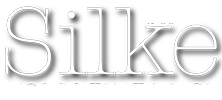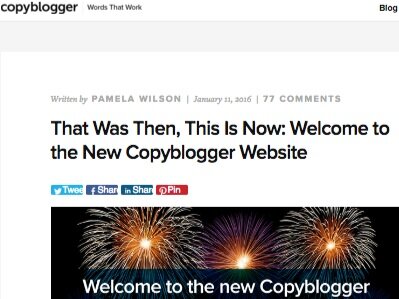Form matters – the right structure for your tagline
Taglines – How to write a tagline
Part II - Form
In a previous article we analysed the benefits of taglines, and how to write them.
Here we look at the form of tagline – ie, how it is phrased – and the impact that may have. It’s an aspect that’s often overlooked.
So first, let’s examine the common (almost default) form – which, increasingly rings hollow.
Putting an ’ing on it
Having a verb in headlines is important, and it can strengthen taglines too.
But there’s a widely help assumption – particularly among SMEs – that any slogan or tagline should use this particular form: with the verb ending: –ing. Building, Delivering, Leading, etc.
[Boring grammar bit: Gerund or Present participle?
A word with –ing at the end can be classed as the present participle of a verb – something that’s happening contemporaneously. Or it’s a gerund, which is actually a verbal noun – the verb has been converted into a noun.]
Yes, there are positives about this approach. The tagline verb is:
active, not passive;
very much in the present, not the past or a vague future; and
continuous, implying everyday and ongoing action (which, to some people, might reinforce a sense of reliability and commitment).
However, it’s a mistake to think this is always or usually going to be the best approach. Other forms can be more compelling.
Before we look at them, here are some examples of taglines in this gerund / present-participle form, including B2B slogans.
The first two are really sentences (as they have the personal pronoun at the start) but there aren’t many famous B2C examples around.
WE’RE GETTING THERE – Are you old enough to remember the British Rail tagline? As a promise-cum-apology it was certainly apt, if not necessarily popular or inspiring.
I’M LOVIN IT – The product of McDonalds’ big Big Mac marketing bucks, but whose love actually? It’s not employees’ burger-flipping joy, but yours. It references customer emotion, so the cheesiness is almost forgivable.
BUILDING A BETTER WORLD – That’s EY, formerly Ernst & Young, the Big 6 accountancy giant. You could even say the bean counters have two in there (though the second is really an adjective). Would ‘Build a better world’ be better? (See calls to action – below.)
BUILDING EXCELLENCE – John Sisk and Son is a builder. This slogan connotes excellent buildings as well as excellence in the process of building. And it’s short and to the point. So that’s fair enough.
ENGINEERING THE FUTURE – A similar story for construction group Laing O’Rourke. A bit more abstract, but it implies a forward-thinking, progressive organisation as well as referencing their industry and expertise.
MAKING AN IMPACT THROUGH OUR CAPABILITY IN HOUSEBUILDING – Another national builder. But I’ve cheated. It’s not clear whether this is a tagline or just the key message on their home page. Either way, it’s too long, vague (what capability?) and corporate. ‘Making an impact’ makes me think of demolition. And it should be razed and replaced with something more compact and meaningful.
DRIVING PROFITABILITY FOR OUR CLIENTS – The digital marketing agency’s tagline literally explains its name – the acronym DPFOC. Doesn’t exactly trip off the tongue, or tell you what they do, but at least it puts the client / proposition up front (and explains that weird business name).
SERVING YOU SINCE 19XY– A lot of smaller and local businesses use a variant of this. I get it: “You’ve been going that long, you must be doing something right.” But if I wasn’t born then do I care? Anyway, when’s the last time someone said: “You must use that contractor [dry cleaners, insurance broker, consultancy or whatever] – they’ve been trading since the year dot!”
OTHER APPROACHES
This approach is somewhat hackneyed. Other forms of tagline phrase can be more powerful, for several reasons – apart from the fact they stand out from the gerund-favouring herd.
So let’s consider three – the plain old statement of fact, the ‘call to action’, and the ‘triptych’.
Give it to them straight
In the form of a straight statement, the tagline simply makes a claim for the company or brand. Depending on how it’s worded, it can sound more like hard fact, and lend added authority and credibility.
The statement may or may not have a verb.
Some random examples:
THE APPLICANCE OF SCIENCE – Zanussi’s phrase lays claim to innovation. And it is memorable because of the white goods manufacturer’s play on the word ‘appliance’. Anyway, the gerundial form, ‘Applying science’ would be lame and instantly forgettable.
HIGH PERFORMANCE. DELIVERED. – You could say Accenture’s statement is low-key, but its matter-of-fact tone lends credibility. ‘High performance’ may be a predictable, hackneyed claim. But the full stops suggests a fait accompli. Anyway, this is far stronger than ‘Delivering high performance’.
DOES WHAT IT SAYS ON THE TIN – You can’t get more matter-of-fact than this. Cuprinol’s catchphrase is almost an anti-tagline. It might have been borne of desperation after all other creative tagline ideas had been exhausted. ‘We don’t need to say any more.’ But it’s clever, and so simple and effective, the phrase has entered the language.
NO FT, NO COMMENT – An outrageously self-confident claim to be the oracle of wisdom, but it does smack of authority. And it’s psychologically astute too, playing on any ambitious businessperson’s fear of missing out on insights read by their peers.
BECAUSE YOU’RE WORTH IT – Another bit of clever consumer psychology, from L’Oreal. ‘We’re top quality. So are you. (And you appreciate why we cost more.)’ Like some of the call-to-action examples (below), this also creates that sense of shared values.
INTELLIGENCE IS OUR REAL ESTATE – London property consultancy Levy re-branded in 2014, dropping the names of its founding partners. The strapline was designed to underpin the new identity. It’s clever, or at least, and obviously they think they are. ‘It’s not just about bricks and mortar – but market know-how.’
UK’s No. 1 FOR BUSINESS WASTE – This is the slogan of waste management contractor Biffa. It’s a formula applicable to any sector. Clear, but such a generic – and some might say, predictable – claim doesn’t necessarily impress. (Full disclosure: We’ve worked for competitor companies.)
OUR MISSION IS YOUR SUCCESS – This could be any sector, and you see many variations: Your success is our reputation, etc. OK, it makes common cause with the client, but call me an old cynic, it sounds preachy and phoney at the same time.
So, the words need to work, as well as their structure.
A call to action
Here the tagline takes the form of a command or call to action. The verb is in the imperative tense. So it’s an exhortation, tends to be upbeat, and is designed to inspire and galvanise.
Which is why this form tends, in my view, to be more compelling than the –ing approach. A couple of other reasons for this:
Taglines using the gerund / present particle are usually talking about the business.
The call to action is about the customer – so it’s more likely to resonate with them.
Sometimes the words used can apply to both – ie, the provider and buyer. Then it creates a sense of shared purpose, which your prospect feels.
Some examples:
JUST DO IT – Nike’s tagline is credited with helping to save the sports shoemaker from the abyss, turning a niche brand for elite athletes into a mass-market, lifestyle statement, and leapfrogging then market leader Reebok. It’s intended to mean ‘Have a go’, change your life, get fit, etc. Or subliminally, ‘Go on, buy me’.
THINK DIFFERENT– Apple could have said ‘We think different’ or ‘Thinking different’. (Or even used correct grammar … ‘Think differently!’) But no. This is more concise, clever and commanding. It implies that both Apple and you are free thinkers. ‘Stand out from the PC crowd. Choose our distinctive designs.’ So there’s that shared purpose – ‘Let’s break the mould together’.
EAT FRESH – Subway’s slogan is cheap and cheerful, like the brand. The call to action is more compelling and succinct than ‘Serving fresh food’ or whatever.
Wouldn’t these CTA versions of the EY and O’Rourke taglines (see the ‘ing versions above) be a bit more compelling?:
BUILD A BETTER WORLD
ENGINEER THE FUTURE
The classic trio
Another variant is the triple – a sequence of three words or very short phrases. This as much a label as a statement of fact, but it’s a classic device.
Orators and writers have exploited the elegance and rhythm of grouping words or sentences in threes, for centuries.
Form a tagline from three standalone words separated by stops / dashes is a different form worth mentioning. It has the virtue of combining several attributes or values in a short space or slogan.
An example from a legal firm:
EXPERIENCE. CREATIVITY. RESULTS.
Or it could be a trio of adjectives, as we proposed for advised for a property agency:
EXPERT. PROVEN. TRUSTED.
The staccato, emphatic effect is strong. Full points reinforce that finality. But it all hangs on those three nouns / adjectives, with no verb to animate them.
Another variation is to have three commands (verbs included) as in this tagline we composed for a consultancy in the transport industry:
DIRECT CHANGE • DRIVE PERFORMANCE • DELIVER IMPROVEMENT
To sum up, the ‘triptych’ is another option, and it can be especially useful where a killer phrased tagline is elusive. The downside is that this form can try to convey too much and it tends to be less memorable – unless the words are not commonplace, or they rhyme or alliterate (which can seem too tricksy).
So what form is best?
There’s no categorical answer to that. It depends.
What’s most important is that you look at the different options, and put aside any preconceptions you may have.
Consider the words and form together, and try to imagine the effects each option may have on your audience.
But please remember, you don’t have to put an –ing on it. A call to action or statement of fact, or even a triple tag, may well be more effective and distinctive.
And do let us know what you think – about any of the above, your tagline, or your work in progress.
POSTSCRIPT
A confession. My old business cards, and an earlier version of our website, bore the legend ‘Making words work’. As you can see, the current Silke & Co tagline is Words that Work.
It changed in 2015 based on research into the effectiveness of ‘calls to action’ and direct experience writing these CTAs as well as headlines and taglines.
The imperative form – ‘Make words work’ – doesn’t sound right. It’s something to do with the two ‘dubyas’ clashing, which can sound like ‘wordsworth’.
Some time later I was initially abashed to see our new slogan adorning the website of an eminent US content marketing specialist (www.copyblogger.com). Had I subliminally copied it? No, they had adopted it after re-branding/positioning their business, I think in 2016.
Anyway, given it uses common words in a familiar phrasal form, there’ll be other instances out there too.
But the tagline does the job for now. And, hopefully, some of the advice we’ve shared here may work for your business tagline too.
Let us know how you get on. Or if you have any questions.



